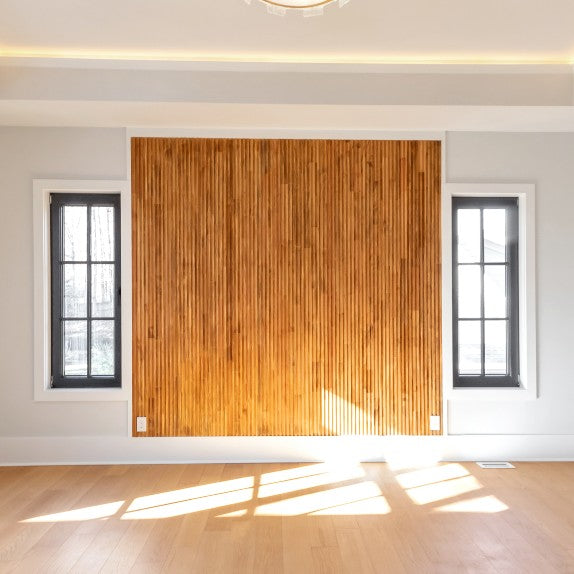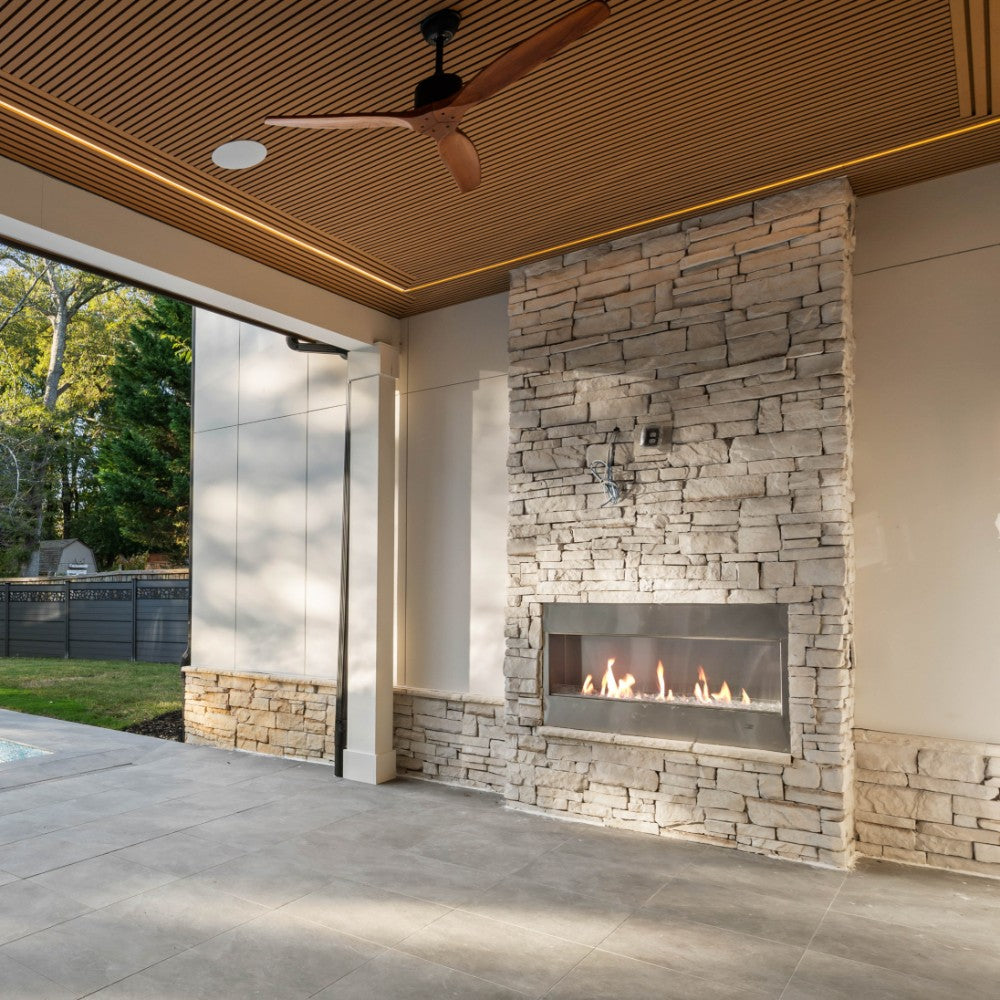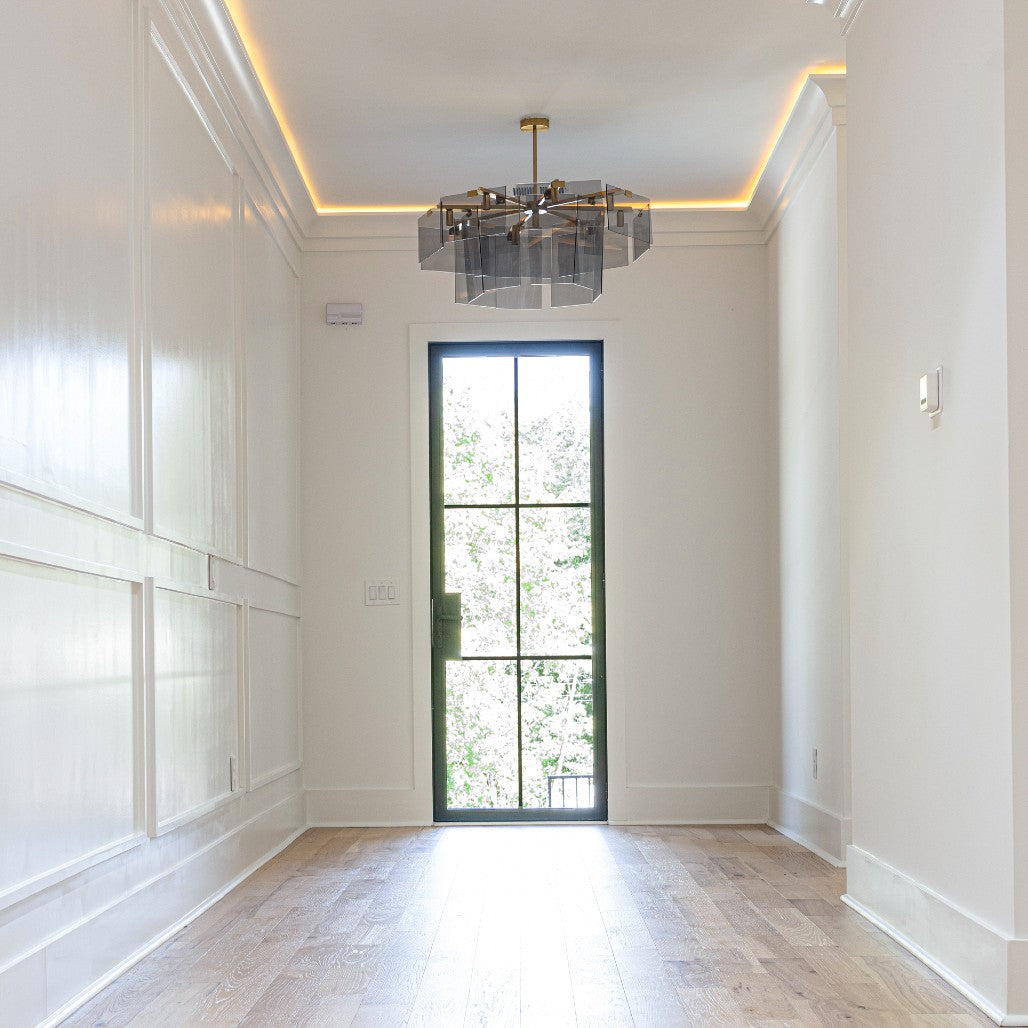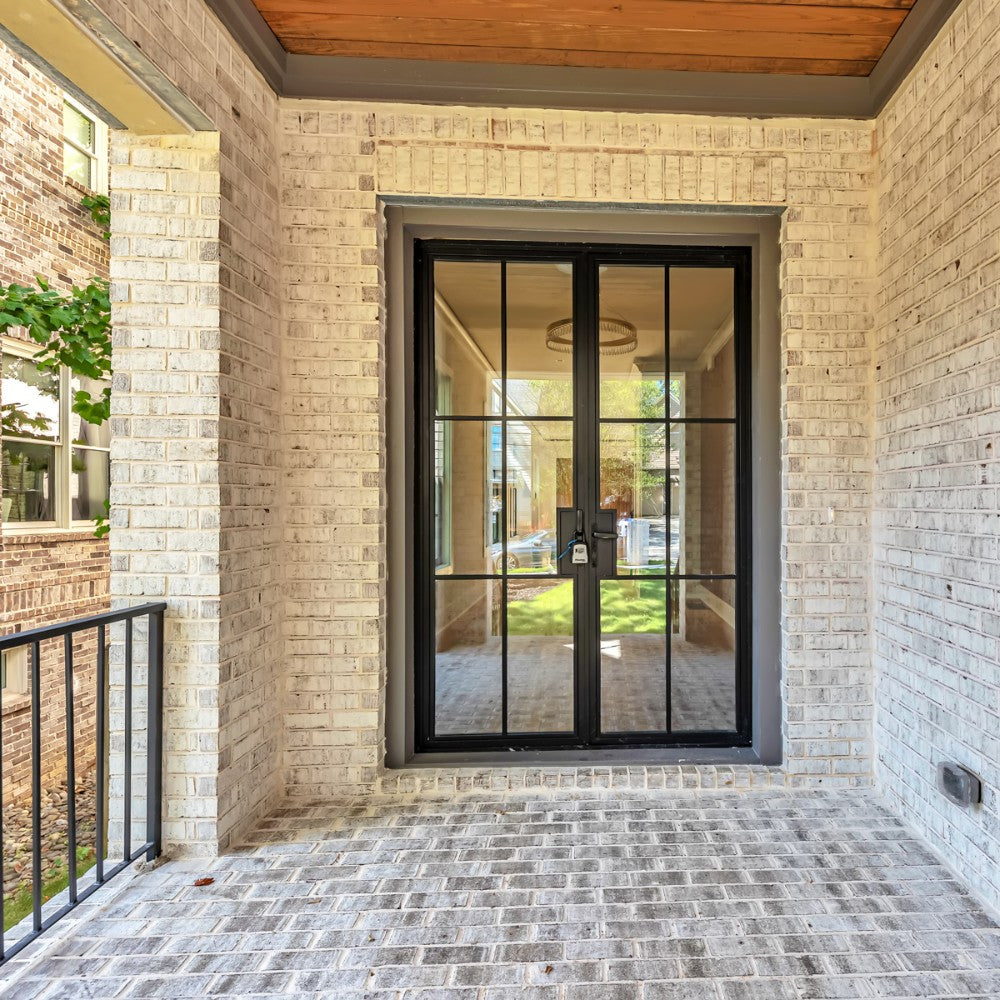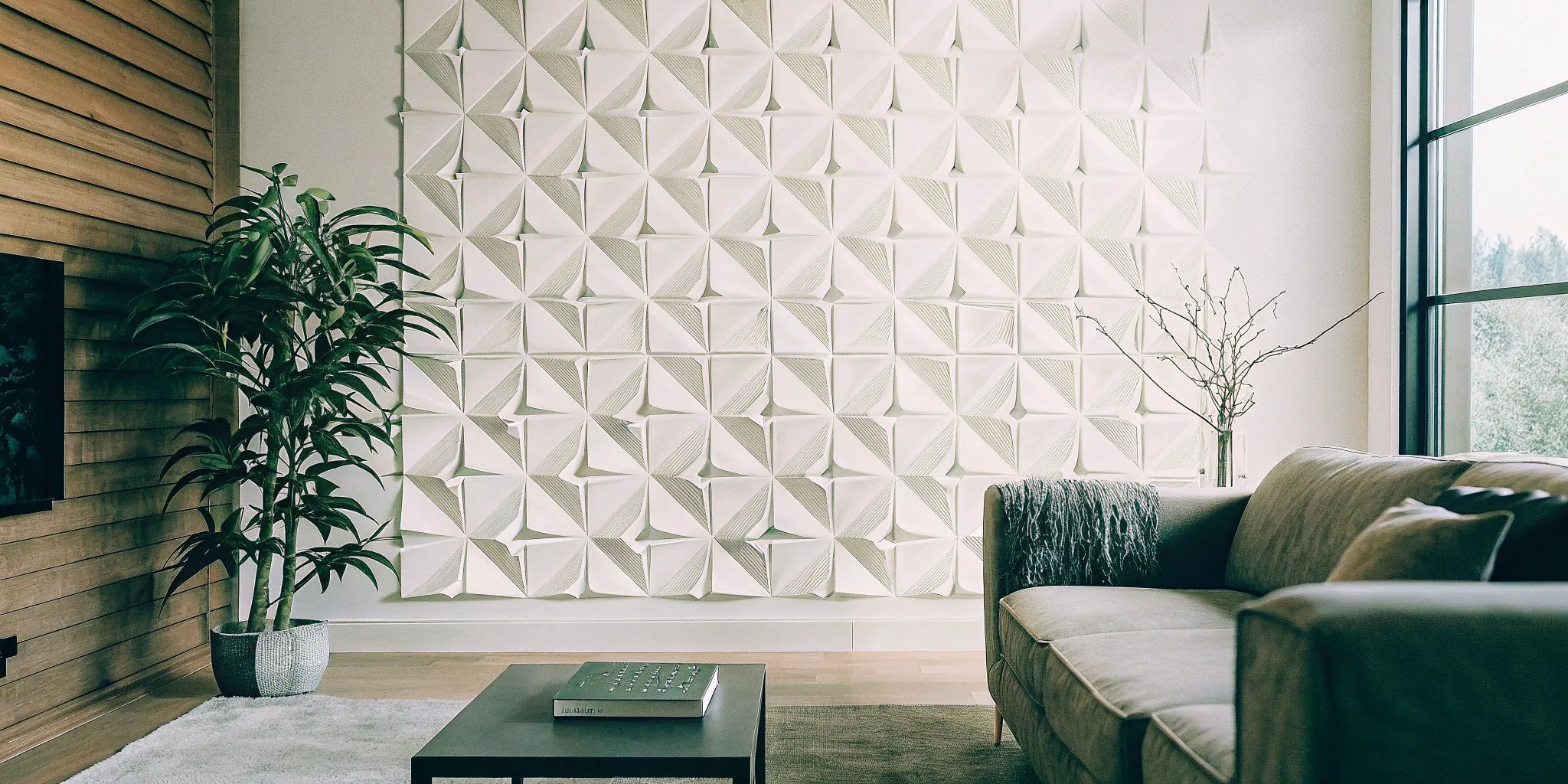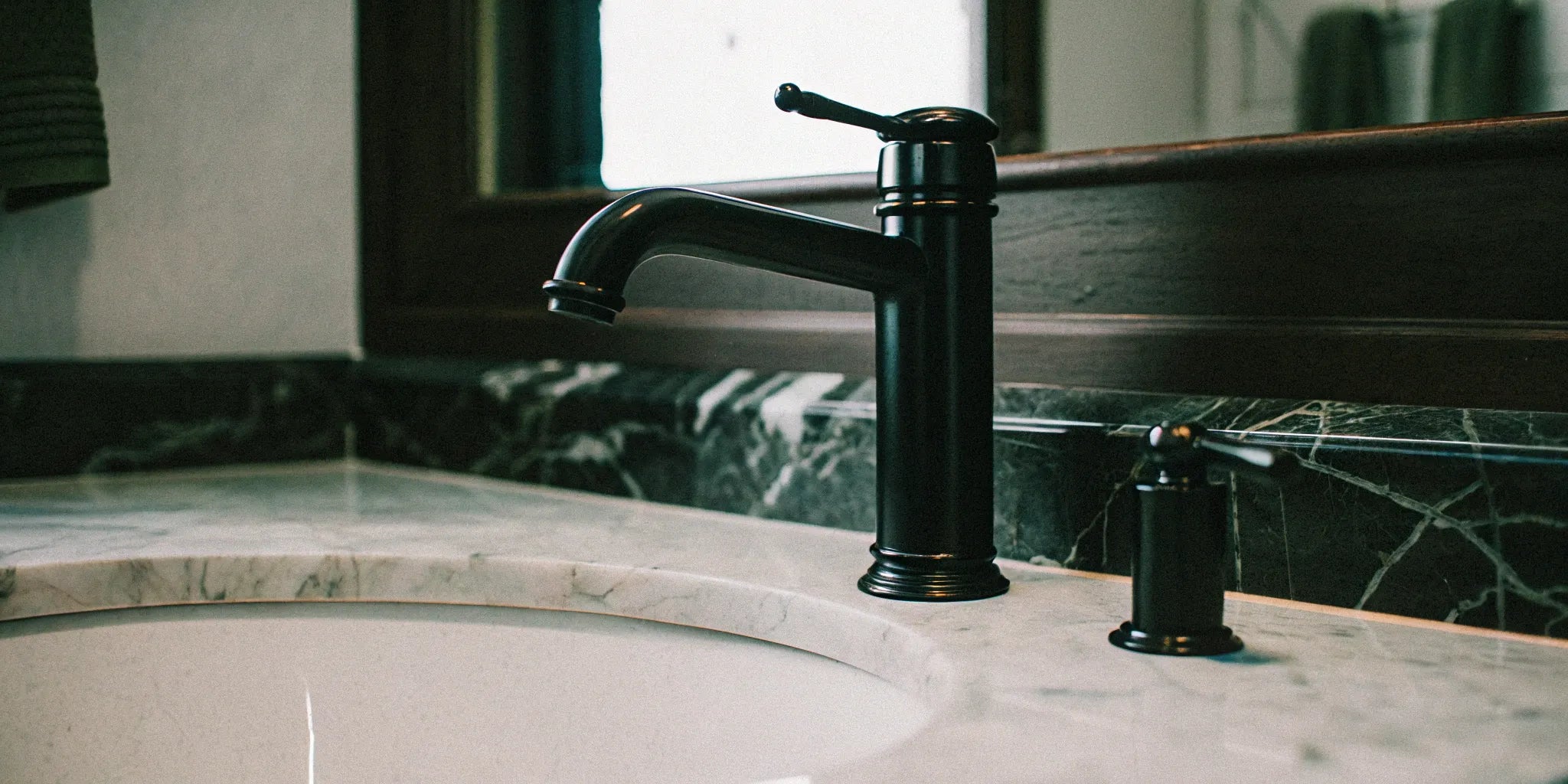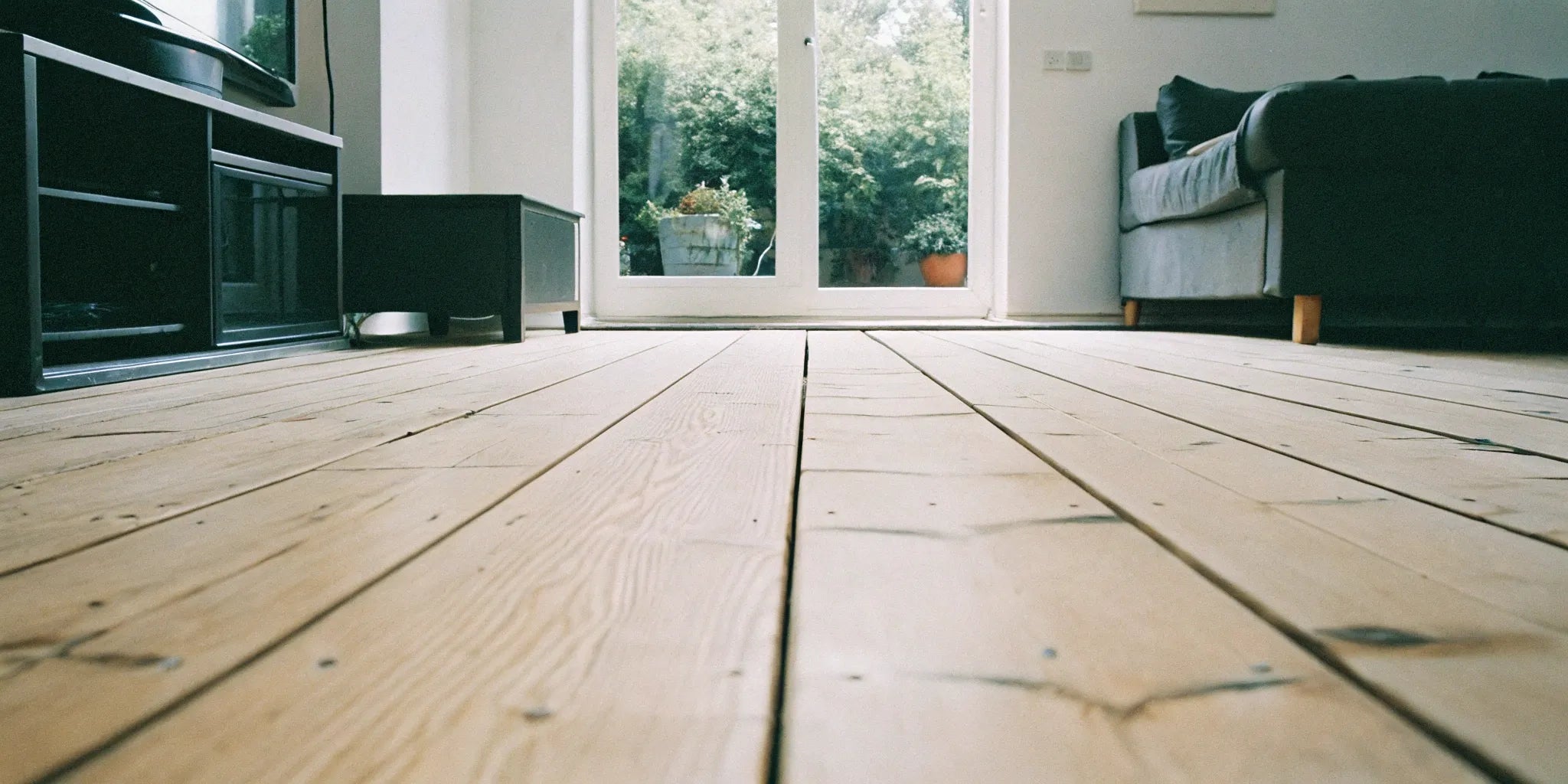
Your Guide to 12 Inch Wide Plank Flooring: Pros & Cons
If you truly appreciate the warmth and character of natural wood, there is no better way to showcase it than with wide planks. Narrower boards can chop up the beautiful, flowing grain patterns, but 12 inch wide plank flooring provides a generous canvas. Each board tells a story through its unique knots, mineral streaks, and subtle color variations. This creates an organic, textured foundation that brings a sense of nature and authenticity into your home. We’ll explore how to select the perfect wood species and finish to highlight this natural beauty, creating a space that feels both grounded and incredibly sophisticated.
Key Takeaways
- Create a Foundation of Luxury and Space: Choosing 12-inch wide planks is a design choice that makes rooms feel larger and more cohesive. The minimal seams create an uncluttered visual field, allowing the natural grain and texture of the wood to become a central feature of your home's style.
- Acclimation and Subfloor Prep Are Crucial: The success of your flooring project hinges on preparation. You must let the wood planks acclimate to your home's unique climate for several days before they are installed, and your subfloor must be perfectly clean and level to prevent future warping, gapping, or squeaking.
- Protect Your Investment by Managing Humidity: Wide wood planks are more sensitive to their environment than narrower boards. Maintaining a stable indoor humidity level (aiming for 35-55%) is the most effective way to prevent seasonal movement and ensure your beautiful floors remain flat and stable for decades.
Why Choose 12-Inch Wide Plank Flooring?
Choosing a floor is one of the biggest design decisions you’ll make for your home. It’s the foundation for your entire space. While standard 3-inch planks have been the go-to for decades, opting for 12-inch wide plank flooring is a choice that makes a significant statement. It’s about creating a feeling of luxury, permanence, and connection to nature. If you want a floor that does more than just sit there—one that actively defines and enhances your home’s character—wide planks are an incredible option. They offer a unique combination of visual drama and understated elegance that’s hard to beat.
Create a Striking Visual Impact
There’s no denying the commanding presence of 12-inch wide planks. They create an immediate sense of scale and grandeur that you just don’t get with narrower boards. Ultra-wide boards instantly elevate your space, bringing a sense of the outdoors inside in a powerful way. This style of flooring feels both modern and timeless, providing a strong visual anchor for any room. Whether your style is rustic farmhouse or sleek contemporary, these floors establish a luxurious foundation that makes furniture and decor pop. It’s a bold choice that pays off by turning your floor into a true design feature.
Enjoy Fewer Seams and a Cleaner Look
One of the most appealing aspects of wide plank flooring is the clean, continuous look it creates. With fewer boards come fewer seams, which results in a less busy and more cohesive surface. As Castle Bespoke Flooring notes, wider planks have "fewer seams between boards, making the floor look smoother." This uninterrupted flow gives your space a serene and uncluttered feel, allowing the texture and color of the wood to take center stage. This minimalist appeal is perfect for creating a calm, open atmosphere and helps your room feel more organized and spacious without any extra effort.
Make Any Room Feel Bigger
It might seem counterintuitive, but using large planks can actually make a room feel more expansive. The secret is in the reduced number of seams. With fewer lines breaking up the floor, your eyes perceive the space as larger and more open. This visual trick works wonders in small and medium-sized rooms, creating an illusion of depth and width. In larger, open-concept areas, wide planks enhance the sense of scale, giving the room a grand, unified appearance. It’s a versatile design tool that helps you manipulate the perception of space to fit your vision.
Showcase the Wood's Natural Beauty
If you truly love the character of wood, wide planks are the best way to display it. A wider surface provides a bigger canvas to showcase the intricate grain patterns, unique knots, and subtle color variations of the timber. As the experts at Oak and Broad point out, "Wider planks highlight more of the wood's natural beauty." Instead of being cut short, the long, flowing lines of the wood are allowed to shine, adding organic texture and warmth to your home. This look pairs beautifully with other high-quality, natural-feeling materials, like our custom steel doors, to create a cohesive and sophisticated design.
Where to Find Wide Plank Flooring
Once you’ve decided that wide plank flooring is the right choice for your home, the next big step is finding the perfect supplier. The sheer number of options can feel a bit overwhelming, but don't worry—I've done the research for you. The right supplier does more than just sell you wood; they provide quality materials, expert advice, and the specific style you need to bring your vision to life. Whether you're a homeowner tackling a weekend renovation or a contractor sourcing for a large project, knowing where to look is key.
Your choice of supplier will depend on your priorities. Are you looking for the rustic charm of reclaimed wood, the sleek precision of custom-milled planks, or a budget-friendly option that doesn’t compromise on style? Some companies specialize in sustainable sourcing, while others are known for their vast inventory and quick shipping. To help you get started, I’ve put together a list of some of the best places to find wide plank flooring. Each one offers something unique, so you can find the perfect match for your project's needs and your personal aesthetic.
The USA Builders Depot Collection
For a fantastic all-around option, I always recommend starting with the USA Builders Depot flooring collection. They offer a wide selection of high-quality, luxury building materials that manage to be both beautiful and affordable. This makes them a reliable source whether you're a homeowner or a trade professional. Their range includes various styles and finishes, so you’re likely to find something that fits your design vision perfectly. Plus, with fast nationwide shipping, you can get your project started without unnecessary delays. It’s a great place to find premium materials without the premium price tag.
Stuga Studio
If a truly one-of-a-kind floor is what you're after, Stuga Studio is a name you should know. They specialize in custom wood flooring and are deeply focused on sustainable practices and exceptional craftsmanship. This is the place to go when you have a specific vision that you can't find anywhere else. Their team works with you to create personalized flooring solutions that are tailored to your individual taste. Choosing Stuga means you’re not just buying a floor; you’re investing in a unique piece of art for your home that’s also eco-conscious.
Olde Wood Products
For those who love a bit of history and character, Olde Wood Products is a fantastic choice. They are renowned for their reclaimed wood flooring, which brings a sense of warmth and story to any space. With a variety of textures and finishes, you can achieve anything from a cozy, rustic farmhouse look to a more vintage, industrial vibe. Their commitment to sustainability is a huge plus, as they give old wood a new life. This is an ideal option for anyone wanting to make an eco-friendly choice without sacrificing an ounce of style.
Carlisle Wide Plank Floors
When your project calls for a truly premium touch, Carlisle Wide Plank Floors delivers. They are masters of custom design, using high-quality materials to craft floors that are nothing short of stunning. Carlisle focuses on creating planks that enhance the natural beauty of the wood and the overall feel of your space. With a wide array of finishes and textures available, you can work with them to create a floor that is perfectly suited to your home’s aesthetic. They are a top-tier choice for anyone looking to make a significant and lasting design statement.
Garrison Collection
If you need flooring that is as durable as it is stylish, check out the Garrison Collection. They offer a diverse range of wide plank options, including engineered hardwood and luxury vinyl, which are perfect for busy households or commercial spaces. Their products are designed to stand up to daily wear and tear while maintaining a high-end look. This makes them a practical yet sophisticated choice for almost any application. Whether you're renovating your family home or outfitting a new office, Garrison provides reliable and attractive flooring solutions.
Oak and Broad
For lovers of classic hardwood, Oak and Broad is a must-see. They specialize in wide plank hardwood flooring, with a strong focus on high-quality oak and other beautiful hardwood species. What makes them stand out is their dedication to providing custom options and a variety of finishes, allowing you to create a truly unique look. If you have your heart set on a specific shade or texture of oak, this is the place to find it. Their expertise in hardwood ensures you’ll get a floor that is both timeless and perfectly tailored to your home.
Bruce Flooring
If convenience and reliability are high on your list, Bruce Flooring is a well-known brand that’s worth a look. They offer a wide variety of flooring types, including wide plank hardwood and laminate, making it easy to find something that fits your budget and lifestyle. Their products are designed for straightforward installation and simple maintenance, which is a huge bonus for DIY-ers or anyone looking for a low-fuss solution. Bruce is a practical and accessible choice for homeowners who want a beautiful new floor without a complicated process.
What to Know Before You Install
You’ve picked out your beautiful wide plank floors, and you’re ready to see them in your space. I get it—it’s the most exciting part! But before you or your contractor lay down that first board, a little prep work will make all the difference. Getting the installation right is the key to ensuring your floors look amazing and last for decades. A successful project is less about speed and more about precision. From preparing the subfloor to letting the wood acclimate, these steps are non-negotiable for a flawless finish that stands the test of time. Let’s walk through exactly what you need to know to get it right from the start.
Prepare Your Subfloor Correctly
Think of your subfloor as the foundation for your new flooring. If it isn’t solid, level, and dry, you’re setting yourself up for issues like squeaks, gaps, and warping down the road. Before you begin, make sure the subfloor is completely clean of any debris and perfectly flat. You may need to sand down high spots or use a leveling compound for low areas. For the best structural support, your new hardwood flooring should be installed perpendicular to the floor joists. If you’re working with a single-layer subfloor, running the planks on a diagonal is also a great option for added stability.
Choose Your Installation Method: Nailing vs. Gluing
With wide planks, you generally have two main installation options: nailing or gluing. The traditional method is to nail the planks to the wooden subfloor, which creates a solid, long-lasting result. Alternatively, a full-trowel glue-down installation can add stability, reduce sound, and is often necessary for concrete subfloors. Your choice will depend on your subfloor type and the manufacturer’s recommendations. Just as the width and color of your planks affect a room’s feel, your installation process is a critical decision that impacts the final look and performance of your floor.
Acclimate Your Flooring to Your Home's Climate
This is a step you absolutely cannot skip. Wood is a natural material that expands and contracts with changes in temperature and humidity. Wide plank floors are especially susceptible to these environmental shifts. To prevent future gapping or buckling, you must let the wood acclimate to your home’s environment. This means bringing the flooring into the room where it will be installed and letting it sit for at least three to five days—or longer, depending on the climate. This gives the wood time to adjust to your home's unique humidity levels, ensuring a stable installation.
Get Your Joist Orientation Right
Knowing where your joists are is fundamental to a secure installation, especially when nailing down your planks. As mentioned earlier, you’ll want to lay the planks perpendicular to the joists for maximum support. For planks that are 8 inches or wider, the nailing schedule becomes even more important. A good rule of thumb is to face-nail the boards into every joist. For boards between 8 and 10 inches wide, you’ll want to use two nails per joist to prevent any potential cupping or movement over time. This extra attention to detail provides the structural integrity wide planks need to stay flat and beautiful.
Decide Between Pro and DIY Installation
Installing wide plank flooring can be a complex job, so it’s worth thinking about whether to hire a professional or do it yourself. A DIY installation can save you money and give you a huge sense of accomplishment, but it requires patience, precision, and the right tools. If you’re not confident in your skills, hiring a pro is a smart investment. Professionals have the experience to handle any quirks your home might have and can get the job done efficiently. For contractors and designers, this is where your expertise shines. If you’re a trade professional, you can join our Trade Program for exclusive access to our collections.
Avoid Common Installation Mistakes
A few common slip-ups can derail an otherwise perfect flooring project. One of the biggest is forgetting to leave a small expansion gap—typically about a half-inch—between the flooring and the walls. This gap allows the wood to expand naturally without buckling and is easily hidden by baseboards. Another key is to stagger the seams between planks from one row to the next. This not only looks more professional but also adds to the floor's structural strength. Finally, always order about 10% more flooring than your square footage requires. This ensures you have enough material to account for cuts and any mistakes along the way.
How to Care for Your Wide Plank Floors
Your beautiful wide plank floors are an investment, and with the right care, they’ll look stunning for decades. Keeping them in top shape isn't complicated—it just requires a consistent routine and a little know-how. Think of it as protecting the character and warmth you fell in love with. These simple steps will help you maintain their natural beauty and durability, ensuring they remain a highlight of your home.
Simple Daily Cleaning Tips
The best way to keep your floors looking fresh is with a simple daily routine. A quick sweep with a soft-bristled broom or a pass with a dust mop will pick up the dust and grit that can act like sandpaper on your floor’s finish. If you prefer to vacuum, be sure to use a soft-brush head attachment and avoid the beater bar, which can cause scratches. For spills, act fast! Blot them immediately with a clean, dry cloth to prevent moisture from seeping into the wood. For a more thorough clean, you can use a microfiber mop that is only slightly damp and well wrung-out.
Control Your Home's Humidity
Wide plank flooring is made from natural wood, which means it expands and contracts with changes in humidity. To prevent issues like gapping in the winter or cupping in the summer, it’s important to maintain a stable indoor environment. Aim to keep your home’s humidity level between 35% and 55% year-round. You can easily monitor your home's humidity with an inexpensive hygrometer. Using a humidifier during dry months and a dehumidifier when it’s humid can make a huge difference in protecting your floors from seasonal changes and preserving their integrity for the long haul.
Prevent Scratches and Dents
An ounce of prevention is worth a pound of cure when it comes to scratches. Place felt pads on the bottom of all furniture legs—chairs, tables, sofas, you name it—to prevent scuffs when they’re moved. In high-traffic areas like entryways, hallways, and kitchens, use area rugs or runners to protect the finish from daily wear and tear. It’s also a good idea to have a "no shoes" policy, especially for high heels or cleats. And if you have furry friends, keeping their nails trimmed will help prevent accidental scratches as they run through the house.
Find the Right Cleaning Products
When it comes to cleaning products, less is more. Avoid using oil soaps, waxes, or any cleaner with ammonia or harsh chemicals, as these can dull or damage the finish on your hardwood flooring. Instead, opt for a pH-neutral cleaner specifically formulated for wood floors. Always check the manufacturer’s care guidelines for your specific flooring to see which products they recommend. A gentle cleaner will remove dirt and grime effectively without leaving behind a sticky residue or compromising the protective sealant on your beautiful wide planks.
Know When to Call a Professional
While daily maintenance is straightforward, some issues are best left to the experts. If you notice deep gouges, widespread water damage, or planks that are starting to warp or cup despite your best efforts, it’s time to call in a pro. A certified flooring professional can assess the damage and perform targeted repairs that a DIY approach might make worse. Refinishing, in particular, is a complex job that requires specialized equipment and expertise to achieve a smooth, even result. The National Wood Flooring Association is a great resource for finding a certified professional in your area.
Breaking Down the Cost and Value
Investing in new flooring is a big decision, and it’s important to look at the full picture—not just the price tag on the planks. Understanding the total cost helps you budget accurately and appreciate the long-term benefits of your choice. From the material itself to installation and upkeep, let's walk through the key financial aspects of choosing 12-inch wide plank flooring so you can make a confident and informed decision for your home.
How Material Quality Affects Price
The first thing you’ll notice when shopping is that prices for 12-inch planks can vary quite a bit. This is largely due to the quality and type of wood. You'll typically choose between solid hardwood and engineered wood. Solid planks are milled from a single piece of timber, while engineered planks have a real wood veneer over a layered core. The species of wood also plays a huge role—common options like oak will have a different price point than more exotic woods. Finally, the wood's grade, which describes its appearance (think knots and color variations), will influence the cost. Generally, clearer grades with fewer "imperfections" are more expensive.
Factor in Installation Expenses
Once you've chosen your flooring, you need to get it installed. While you might be tempted to DIY, 12-inch wide planks can be tricky. They require a perfectly level subfloor to prevent squeaks and gaps, and the installation process itself can be more demanding than for narrower boards. Because of this, professional installation costs might be higher. If you're a contractor, you already know the importance of getting this right. For homeowners, hiring an experienced professional from our trade program can save you from costly mistakes and ensure your beautiful new floors perform well for years to come.
Calculate Your Square Footage
Before you can get an accurate cost estimate, you need to know how much flooring to buy. Start by measuring the length and width of your room, then multiply those two numbers to get your total square footage. It’s a standard practice to add an extra 10-15% to that number to account for cuts, mistakes, and any planks you may need to discard. When you’re ready to purchase, pay close attention to how much area each box covers. For example, one box might contain 20 square feet of flooring. Knowing this will help you figure out exactly how many boxes you need to order for your project.
Watch for Hidden Costs
The price of the planks and the cost of labor are the two biggest expenses, but they aren't the only ones. Be sure to budget for other potential costs that can pop up along the way. These might include the removal and disposal of your old flooring, materials for subfloor preparation, underlayment or vapor barriers, adhesives, and finishing touches like baseboards or transition strips. Don't forget about potential delivery fees, too. Planning for these items from the start helps you avoid surprises and keeps your project on track financially.
Assess the Long-Term Value
While the initial cost is important, so is the long-term value of your investment. High-quality 12-inch wide plank flooring is incredibly durable and can last for decades with the right care. It adds a sense of luxury and spaciousness that can significantly increase your home's appeal and resale value. It's also worth noting that wide planks can be more susceptible to environmental changes, so choosing a material suited to your region's climate is key to protecting your investment. Happy homeowners often mention in reviews that the timeless beauty and durability of their floors made the initial expense well worth it.
How to Choose the Perfect Design
Picking the right 12-inch wide plank flooring goes beyond just finding a color you like. It’s about creating a foundation that ties your entire room together. The perfect design considers the size of your space, the style of your home, and even the climate you live in. When you get these details right, your floors won't just look beautiful—they'll feel like a natural extension of your home. Let's walk through the key factors to help you find the perfect match for your project.
Match the Planks to Your Room Size
The first thing to consider is the relationship between your plank width and your room's dimensions. Wide planks are fantastic for making a spacious room feel even more open and grand. The fewer seams create a clean, uncluttered look that lets the space breathe. However, it's all about scale. While it’s a common myth that wide planks always make a room feel smaller, the key is proportion. In a very small room, using extremely wide planks might throw off the balance. When you're choosing a width, think about your personal taste and the overall size of your room to find what feels right.
Pick Your Favorite Wood Species
The type of wood you choose, or its species, defines the floor's character. Each species, from classic oak to rich walnut, has a unique grain, color, and hardness. Wide plank flooring is typically defined as any board wider than four inches, and at 12 inches, you get a full display of the wood's natural patterns. When choosing, think about your lifestyle. If you have a busy household with pets or kids, you might lean toward a harder wood like hickory or white oak, which can better withstand daily wear and tear. Softer woods like pine are beautiful but may dent more easily, making them better suited for lower-traffic areas.
Select a Color and Finish
Color sets the entire mood of a room. Lighter floors can make a space feel bright and airy, while darker tones create a cozy, intimate atmosphere. One of the best parts of 12-inch planks is that they truly showcase the wood's character. With fewer seams, the natural grain and color variations become the star of the show. The finish also plays a huge role. A matte finish is great for hiding minor scratches and has a modern, natural look. A satin or semi-gloss finish will reflect more light and can feel more traditional. Browse different flooring options to see how color and finish work together.
Complement Your Home's Style
Your floors should feel connected to the rest of your home's design. Think about your existing furniture, wall colors, and architectural elements. For example, wide planks in darker colors with more texture are a great fit for traditional or rustic homes. If your style is more modern or Scandinavian, you might prefer a lighter wood with a smooth, clean finish. Don't forget to consider other fixed features in your home, like your steel windows or interior doors. The goal is to create a cohesive look where the flooring complements, rather than competes with, your overall aesthetic.
Consider the Environmental Impact
When you're investing in new floors, it's worth thinking about where the material comes from. Choosing sustainably sourced wood is a great way to make an environmentally conscious decision. Look for products certified by organizations like the Forest Stewardship Council (FSC), which ensures the wood comes from responsibly managed forests. Another option is reclaimed wood, which is salvaged from old structures and given a new life. This not only prevents waste but also gives your floors a unique history and character that you can't find in new materials.
Understand How Climate Affects Your Floors
Wood is a natural material that responds to its environment. It expands when it's humid and contracts when it's dry. Because of their size, wide plank floors can be more susceptible to these environmental changes. In regions with extreme humidity swings, this movement can cause gaps to appear between boards or for the boards to "cup," where the edges become higher than the center. This is why acclimating your flooring to your home's climate before installation is so important. It’s also crucial to maintain a stable indoor humidity level year-round to keep your beautiful floors looking their best.
Your Final Decision-Making Checklist
You’re almost at the finish line. Before you make your final selection and place an order, run through this quick checklist. Taking a few moments to confirm these details will give you peace of mind and ensure your new floors are everything you hoped for. This is your final check to guarantee you’ve covered all your bases for a smooth and successful project.
Check for Quality and Durability
When you're investing in flooring, you want it to last. With 12-inch planks, quality construction is especially important. Look for flooring made from high-quality solid or engineered wood that’s built to handle daily life. A well-made plank will resist warping and wear better over time, ensuring your floors look beautiful for years. Take a close look at the materials and finish of any flooring options you’re considering. A durable topcoat will protect the wood from scratches and spills, making maintenance much easier and extending the life of your investment.
Review the Product Warranty
Don’t skip the fine print. A product warranty is the manufacturer's promise to you, and it’s a great indicator of their confidence in the product. A strong warranty protects you from potential manufacturing defects and shows that the company stands behind its flooring. While some brands offer impressive lifetime guarantees, others might have more limited coverage. Read through the details to understand what is covered, for how long, and what actions might void the warranty. Checking customer reviews can also give you insight into a product's long-term performance and the company's reliability.
Plan Your Installation
Proper installation is the key to a long-lasting, beautiful floor. For solid wood planks, a standard best practice is to install them perpendicular to the floor joists to ensure stability. It’s also a good idea to map out the layout before you begin, as 12-inch planks can dramatically influence the perception of a room’s size and flow. If you’re a contractor or trade professional, having a reliable supplier is crucial for a smooth project. Consider joining a trade program to get access to specialized support and pricing for your installation needs.
Finalize Your Budget
Now it’s time to get specific with your numbers. Twelve-inch wide planks often come with a higher price tag than narrower boards because they require larger, higher-quality cuts of wood. When finalizing your budget, remember to account for more than just the cost per square foot. Factor in expenses for underlayment, adhesive, delivery fees, and professional installation if you’re not doing it yourself. Getting a complete quote that includes all materials and labor will help you avoid any surprise costs and ensure your project stays on track financially.
Weigh the Environmental Factors
Wood is a natural material that responds to its surroundings, and this is especially true for wide planks. Changes in humidity and temperature can cause the wood to expand or contract. In a 12-inch plank, these small movements can be more noticeable than in narrower strips, potentially leading to gaps or cupping over time. Think about your local climate and the stability of your home’s indoor environment. Using a humidifier in the winter and a dehumidifier in the summer can help maintain a consistent moisture level, protecting your beautiful new floors from environmental stress.
Related Articles
- Timeless Elegance: The Top Oak Flooring Trends for 2025
- From Classic Oak to Bold Hickory: Choosing the Perfect Hardwood Floor
- Victoria European Oak Hardwood Flooring
Frequently Asked Questions
Are 12-inch wide planks suitable for any room, or just large ones? While wide planks look incredible in large, open-concept areas, they can also work wonders in smaller rooms. The key is proportion. Because there are fewer seams, a wide plank floor creates a clean, uncluttered surface that can actually make a smaller space feel more serene and expansive. It’s less about a strict rule and more about the overall look you want to achieve.
Do wide planks really warp more than standard flooring? This is a common concern, but it’s entirely manageable. Wood naturally reacts to its environment, and a wider board can show that movement more than a narrow one. However, warping is not inevitable. The two most important steps to prevent it are allowing the wood to acclimate to your home's specific climate for several days before installation and maintaining a stable indoor humidity level throughout the year.
What’s the real difference between solid and engineered wide plank flooring? Solid plank flooring is milled from a single, solid piece of timber. It’s known for its incredible longevity and can be sanded and refinished multiple times over its life. Engineered flooring has a top layer of real hardwood bonded to a core of high-quality plywood layers. This construction makes it more stable in areas with fluctuating humidity, such as basements or homes on a concrete slab.
Can I install wide plank flooring over a concrete subfloor? Yes, you absolutely can, but the installation method is critical. For concrete subfloors, you will typically need to use a full-trowel glue-down method rather than nailing. It’s also essential to ensure the concrete is properly sealed with a moisture barrier to protect the wood from any dampness that could come up from the slab.
Is this type of flooring a good choice for increasing my home's resale value? Definitely. Wide plank flooring is seen as a premium, high-end feature that makes a strong impression on potential buyers. It gives a home a custom, luxurious feel that standard flooring often lacks. This upgrade can significantly enhance your home’s appeal, helping it stand out on the market and contributing to a higher perceived value.


